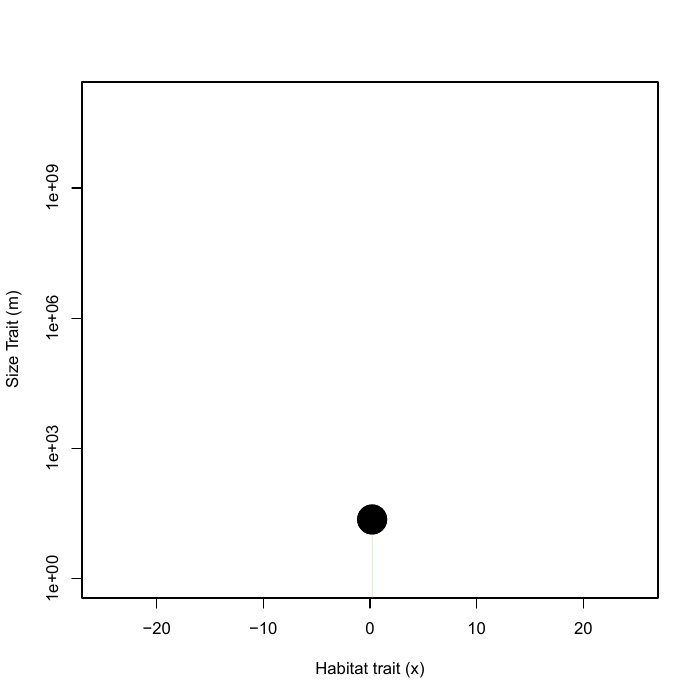Is multi-trophic biodiversity leading to higher ecosystem functioning? Theoretical models simulating complex food webs can help identify mechanisms underlying ecosystem functioning. By means of a trait-based model, we show the importance of biodiversity and food web structure for multiple ecosystem functions and establish hypotheses to inspire empirical studies.
Biodiversity is declining and changing at alarming rates around the world because of human impacts. To anticipate how to conserve biodiversity and ecosystems, scientists have tried to understand the role of biodiversity for ecosystems, by establishing how a community with higher biodiversity may enhance the functioning of ecosystems (set of ecosystem functions characterizing the biomass and flux of energy). However, the role of biodiversity in food webs for ecosystem functioning is less understood, perhaps due to the hard task of measuring/modeling ecosystem functions in diverse multi-trophic assemblages.
Marine food webs describe the organization of organisms from plankton to top-predators. They form networks via numerous predator-prey relationships and are intrinsically complex. A trait-based approach, assigning a few key traits to species, may embrace this complexity and rely on a few assumptions and parameters to model biodiversity and predator-prey relationships. This approach is applied in the model developed by Zhang et al. (2014), simulating food webs with a community assembly and where species are characterized by two traits: their size and their habitat (theoretical representation of the environmental niche).
In this paper, we used this trait-based model to investigate theoretical biodiversity-ecosystem functioning relationships in food webs. First, we demonstrate that the relationship between the number of species and an ecosystem function depends on the identity of the function considered. Second, the number of species alone does not explain ecosystem functioning and we show that food web structure, vertical diversity, dominance and occupancy of the trait space are important drivers. As a result, high multi-trophic biodiversity (for instance number of species) does not necessarily lead to higher ecosystem functioning. Third, the number of interactions established by species can change the diversity in the food web and modify biodiversity-ecosystem functioning relationships, highlighting the importance of food web structure at linking biodiversity to ecosystem functioning.
Complementing our theoretical approach – where we develop research hypotheses – with an empirical approach using observational data and resolved food webs will enhance our understanding of multi-trophic biodiversity-ecosystem functioning relationships in nature, and will help the conservation of biodiversity and ecosystems.
Read the paper here
Maureaud A, Andersen KH, Zhang L, Lindegren M. Trait-based food web model reveals the underlying mechanisms of biodiversity–ecosystem functioning relationships. J Anim Ecol. 2020;00:1–14

Figure: One community assembly with sequential immigration of species (black circles). Species interactions (grey links) are determined by the position of each species along the trait axis (credit: Aurore Maureaud).